Yes, sharks have pectoral fins for steering and lifting while swimming, aiding them in navigating the waters. Also have some other types of fins also, like median fins (anal, caudal, and dorsal) and pelvic fins.
In this article, I will describe in detail the functionality of sharks’ pectoral fins.
How Many Pectoral Fins Do Sharks Have?
Most sharks have two pectoral fins on either side of the shark’s body. These fins act as stabilizers when the shark swims and are primarily used for steering and navigating. The pectoral fins also assist with braking and help the shark to remain in a steady position while hunting prey or swimming in a particular direction.
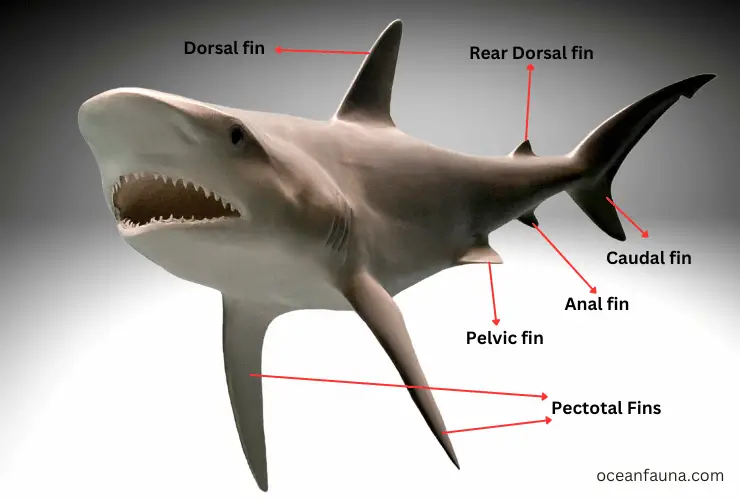
Additionally, some sharks may use their pectoral fins to propel themselves through the water or to change direction quickly. While some species of sharks do not possess two pectoral fins, most do, and they play an essential role in helping them swim efficiently.
Do All Sharks Have Pectoral Fins?
Yes, all sharks have pectoral fins located on either side of their bodies near the gills. The size and shape of the pectoral fin can vary depending on the type of shark, but most species have two equal-sized pectoral fins that are used for steering and stabilizing.
Additionally, some species of shark possess a specialized form of pectoral fin called an elasmoid pectoral fin which is used to push water out from under their body in order to leap out of the water or make quick turns.
What Is a Shark’s Pectoral Fin Made of?
The shark’s pectoral fin is made up of two skeletal elements fused together, called the cleithrum and the radials.
The cleithrum is the major component of the pectoral fin and forms a plate-like structure that supports and anchors the entire fin.
The radials are small rod-like projections that give shape to the fin and allow for muscle attachment and increased maneuverability in the water.
The cleithrum also has several cartilaginous extensions which act as an anchor point for additional muscles and ligaments that play an essential role in the movement of the fin.
Together, these components form a strong yet flexible structure that allows for powerful propulsion while providing great underwater maneuverability.
How Do Pectoral Fins Help Sharks’ Locomotion?
Pectoral fins play a vital role in shark locomotion. By acting as pivots, the pectoral fins allow sharks to rapidly change directions and steer themselves. During movement, the pectoral fins swing in an arc, providing lift and thrust, which help propel them forward.
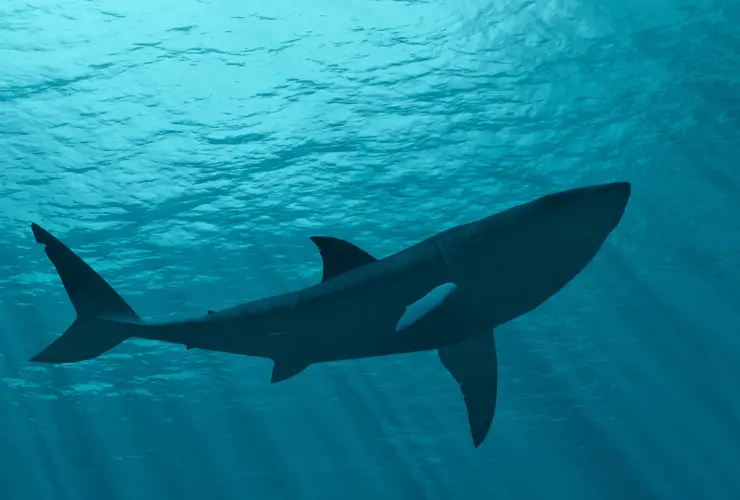
Additionally, due to their shape and size, the pectoral fins can act like rudders allowing sharks to make sharp turns and giving them greater maneuverability and agility. The positioning of the pectoral fins also allows for differential control of pitch by varying their angle or pressure when used in unison with other fins, such as the pelvic fins.
When paired with the ventral caudal fin, they are also able to increase stability while swimming at high speeds by counteracting any changes in pitch or roll.
Overall, pectoral fins are fundamental for shark locomotion as they provide lift, thrust, and directional control, enabling them to navigate complex aquatic environments.
What Are the Functions of a Shark’s Pectoral Fins?
Sharks’ pectoral fins are essential for the movement and navigation of sharks in the water. The pectorals act as “rudders” to help the shark change its direction during swimming, helping it to maneuver quickly in pursuit of prey or to escape predators.
The shape of these fins is also important. They are generally longer and narrower than anal fins and have a curved edge which helps reduce drag when they move through the water.
Additionally, by varying the angle of these fins, a shark can generate lift, allowing it to swim up or down in the water column with greater control.
Furthermore, due to their versatility and high maneuverability, these specialized pectoral fins are useful for making small correction movements to maintain a Coelacanth’s position, hovering just off the ocean floor.
Why Do Sharks Drop Their Pectoral Fins?
Sharks drop their pectoral fins to increase their maneuverability in order to achieve greater acceleration and steering. This is possible due to the combination of a flexible body, hydrodynamic shape, and unique fin articulation. The pectoral fins act as rudders, allowing the shark to orient itself quickly and make sudden turns.
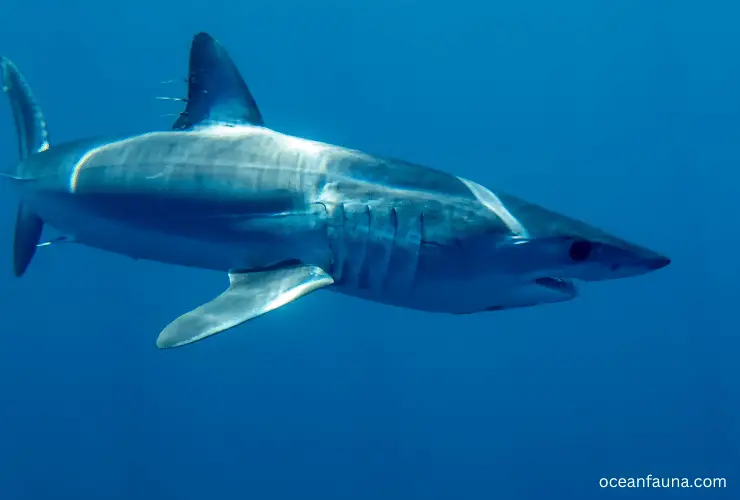
The flexible structure of the pectoral fins also helps maintain stability while allowing them to fold downward with minimal drag resistance when accelerating. The resulting combination of flexibility and hydrodynamic properties enables sharks to shift direction rapidly and increase speed.
Can A Shark Live Without Its Pectoral Fin?
A shark can technically live without its pectoral fin, though it will suffer significant consequences. Pectoral fins provide lift, directional control, and stability in the water. Without one or both of these fins, a shark will have difficulty swimming effectively, as it can no longer turn as quickly, navigate tight spaces, or generate propulsion from its side-to-side movements.
In addition, the lack of pectoral fin(s) will cause an imbalance in the body shape and make it more difficult for the shark to remain buoyant in the water. This could lead to fatigue or even drowning if the shark is unable to stay afloat long enough to breathe properly.
This imbalance can also make them more vulnerable to predation since they are unable to maintain their speed and maneuverability when being chased by predators.
What Is the Difference Between Dorsal Fins and Pectoral Fins?
The primary difference between dorsal fins and pectoral fins is their purpose. Dorsal fins are used to provide stability, while pectoral fins are used for lift and diving control.
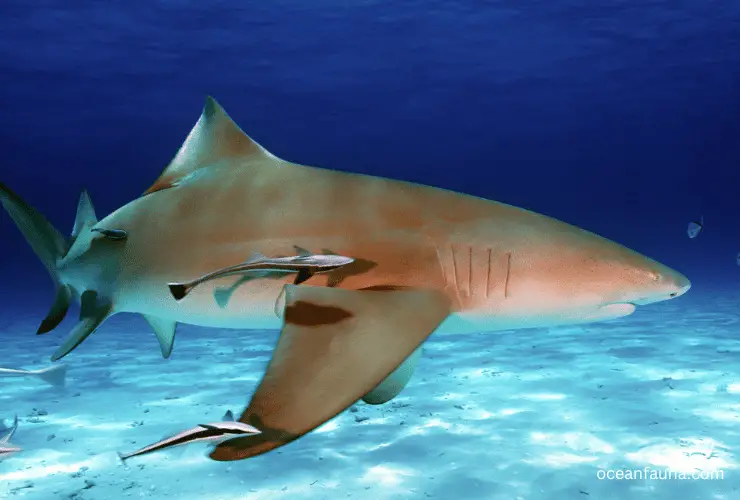
In terms of structure, dorsal fins tend to be higher than pectoral fins and located on the top of a shark’s back. In contrast, pectoral fins are typically broad, flat appendages located lower down on the sides of the body.
Additionally, dorsal fins have a convex shape that helps with steering and stabilization in the water. Some species may have additional spines or lobes on the leading edge of the dorsal fin that aid in maneuvering when swimming.
What’s The Difference Between the Pectoral and Pelvic Fin?
The main difference between pectoral and pelvic fins is the location of each fin. Pelvic fins are located on the bottom of the fish, just in front of the anal fin, while pectoral fins are located on either side of the fish near the gills. In addition to their location, pelvic fins also have a more basic purpose than pectoral fins.
Pelvic fins help balance a fish and keep it leveled when it is swimming and resting, preventing it from rolling from side to side. They also act as stabilizers that allow a fish to rest by sitting on them.
Pectoral fins, on the other hand, are used for propulsion and steering when a fish is swimming. They can also be used to maneuver around obstacles or quickly change direction while swimming.
Conclusion
Now you know that, with two powerful pectoral fins, sharks are able to propel themselves forward, changing direction and stabilizing in the process. Though they can still live without them, this would have drastic repercussions on their aquatic capabilities – leading to possible death by starvation or injury.
Like all of the other fins, pectoral fins are essential for a shark’s ability to survive in the ocean. Even with their other fins, a shark’s pectoral fins are what give them the ability to turn quickly, dive deep, and catch prey.

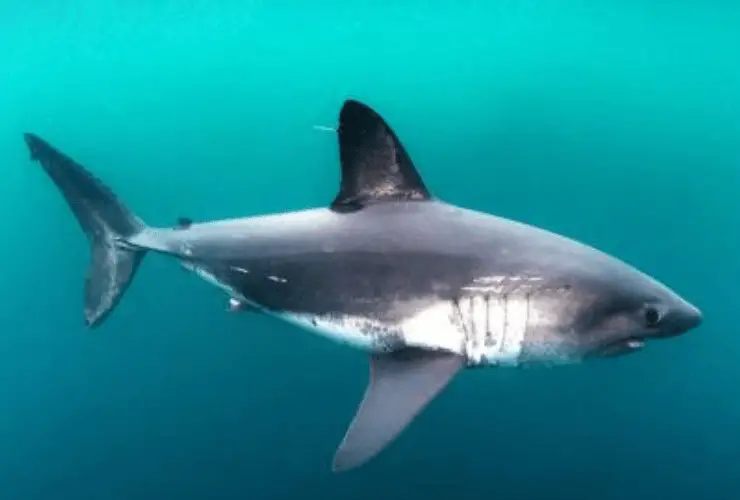
9 thoughts on “Do Sharks Have Pectoral Fins?”